
In order to buy an NFT, you'll need a crypto wallet and cryptocurrency (or, in some cases, just a credit or debit card). Using OpenSea, you can buy items already listed for sale or make offers on any NFTs.
What is an NFT?
An NFT (non-fungible token) is a unique digital item stored on a blockchain. NFTs can represent almost anything, from art, to memberships, to in-game items, and serve as a digital record of ownership.
NFTs operate on blockchain technology. The blockchain is basically a large, digital, public record. The most popular blockchains are distributed across many nodes (read: people’s computers), which is why you’ll hear them described as “decentralized.”
So instead of a central company-owned server, the blockchain is distributed across a peer-to-peer network. Because the blockchain records and preserves history, it is uniquely positioned to transform provable authenticity and digital ownership.
When someone creates, transfers, buys, sells, or otherwise does something with an NFT, these actions all occur on the blockchain. The blockchain both authenticates the transaction and creates an immutable record of it.
This record serves as a permanent statement of authenticity that can be viewed or accessed by anyone. Today, when you buy a piece of art or a collector's item, it typically comes with a paper certificate of authenticity, which you must then keep track of forever. It is easily forgotten, lost or destroyed, creating a very fragile system for authenticity. Blockchains offer a simple and more secure solution to this longstanding issue of proving authenticity
What do you need in order to buy an NFT?
To buy NFTs, you’ll need to set up a crypto wallet. A crypto wallet is a program that stores your NFTs and cryptocurrency.
There are custodial (“hosted”) wallets and non-custodial wallets. Custodial wallets are managed by a third party, whereas a non-custodial wallet is managed by you. Custodial wallets are like keeping your valuables in a storage facility, and non-custodial wallets are like keeping them in your safe at home. Custodial wallets therefore require less responsibility, but have risks related to the third party (like, if the storage facility was robbed). Non-custodial wallets give you full control, but also mean you have to be extra careful (like, not losing your key or accidentally throwing away something valuable when you reorganize your closet).
Non-custodial wallets include software and hardware wallets.
A software wallet is a program that lives on your local device. This makes software wallets a great option for quickly and conveniently buying, selling, and transferring NFTs and cryptocurrency on the blockchain.
A hardware wallet is a physical device that you plug into your device to use. Because it’s not always connected to your device, it’s a great option for long-term secure storage, but is a bit less convenient for fast or frequent transactions.
Different wallets support different blockchains, and not all wallets support NFTs. Here are some wallets compatible with OpenSea:
- Metamask (Ethereum, Polygon, Klaytn)
- Coinbase Wallet (Ethereum, Polygon, Klaytn)
- See the full list of compatible wallets
NFT transactions happen using cryptocurrency, although many NFTs on OpenSea are available to buy with a credit or debit card, through an integration with a payment processor. These transactions are still validated on and recorded to the blockchain.
What is minting?
“Minting” an NFT is the process of writing a digital token to the blockchain. This establishes its immutable record of authenticity and ownership. When you mint an NFT from a project, you’re the first ever owner of that NFT, since the mint is when it’s written to the blockchain.
As a creator, minting an NFT allows you to establish provable scarcity and verified ownership. For the first time, creators can publish limited edition digital works, whose authenticity is validated on the blockchain. Ownership is undisputed and public.
Step 1: Decide where to buy your NFT
Though NFT transactions are done on the blockchain, online portals make it easier to discover NFTs and format blockchain-readable transaction instructions. There are two main kinds of NFT portals: independent project websites, and NFT marketplaces.
Projects will sometimes set up their own websites featuring their NFTs. This is often for a project’s “mint” (the very first sale, when the NFT is written to the blockchain), although some projects have their own independent marketplace, like Coachella and Larva Labs. In most cases, when you use a project website to buy an NFT, you can still resell your NFT through other NFT marketplaces.
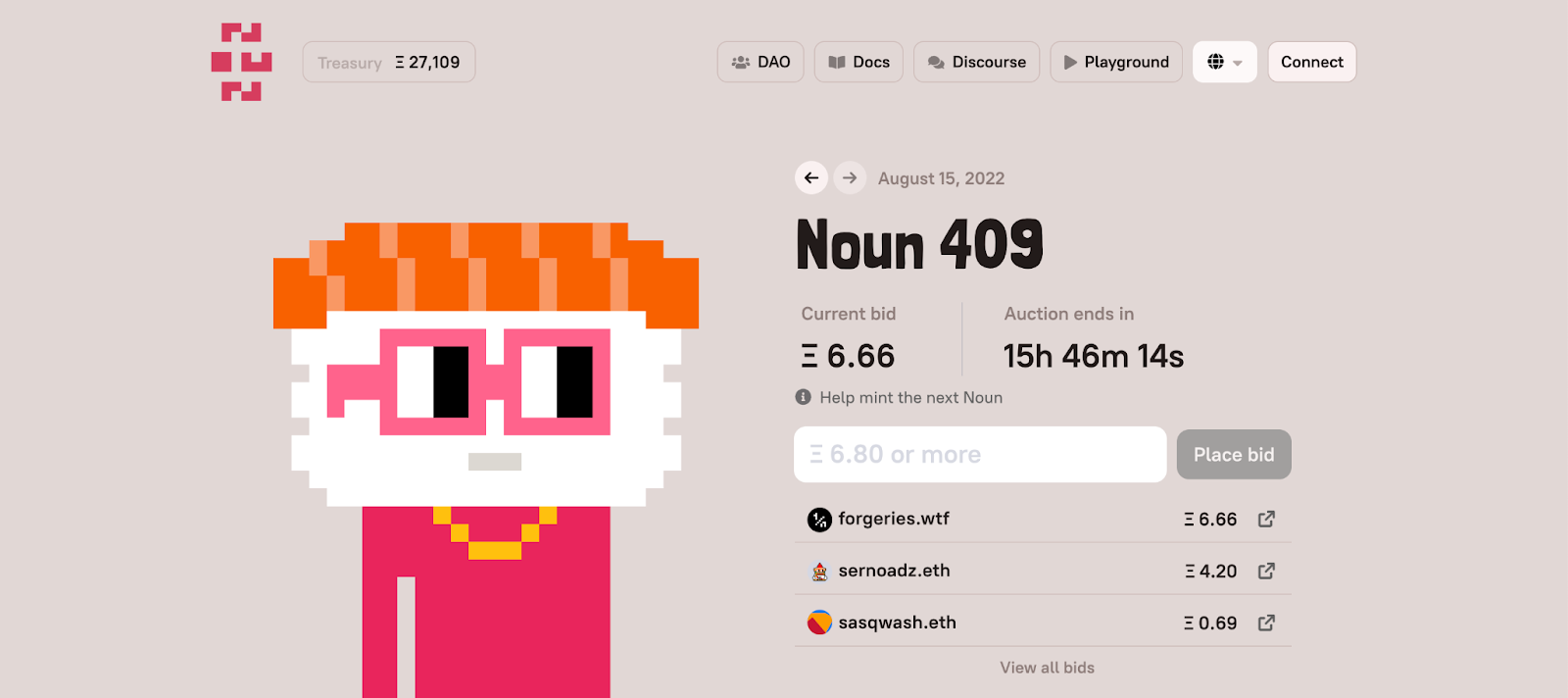
NFT marketplaces will sometimes support primary sales or mints, but they are also a major driver of secondary sales. Marketplaces can differ by the blockchains they support, their fee structure, the types of NFTs they specialize in, and more.
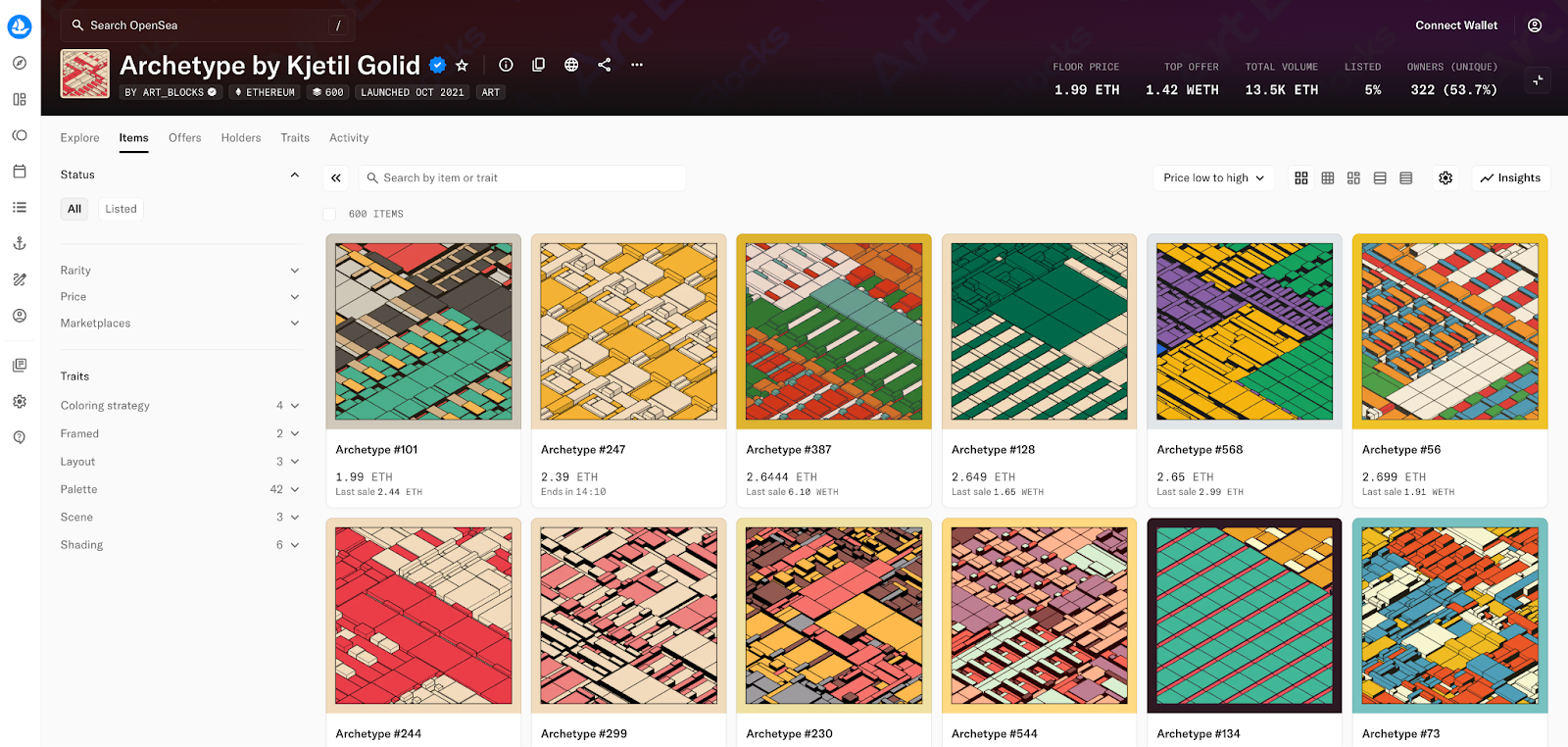
Step 2: Find an NFT you like
If you want to get into NFTs but don’t know how to find something you like, here are some good places to start exploring:
Creators you already follow
Many “traditional” creators are also active in the NFT space, like Snoop Dogg, Damien Hirst, and Gary Vee. You can check out some of your favorite creators and see if they have any cool NFT projects, like this interactive music project by SiA.
Much of the conversation around NFTs happens on Twitter, making it a great place to discover new NFT projects. You can follow accounts, hashtags, and topics that you’re interested in. It’s a great way to not only see what’s currently trending, but also to see what projects are coming soon.
Marketplaces
NFT marketplaces are another great place to discover NFTs. On OpenSea, you can look at “Trending” charts, explore by category, and more. You can also sort and filter by criteria like price, making it easier to find the types of projects you’re looking for.
Step 3: Purchase your NFT
Once you’ve found an NFT you like, how do you actually purchase it? On OpenSea, sellers may list NFTs for a fixed price. Alternatively, you can make an offer to buy an NFT, specifying your own price.
Buy now
The “Buy now” button appears if a seller has already listed an NFT at a fixed price. If you click the “Buy now” button, OpenSea will redirect you to your wallet software, where you are prompted to sign a transaction to purchase the NFT. This is the simplest method.
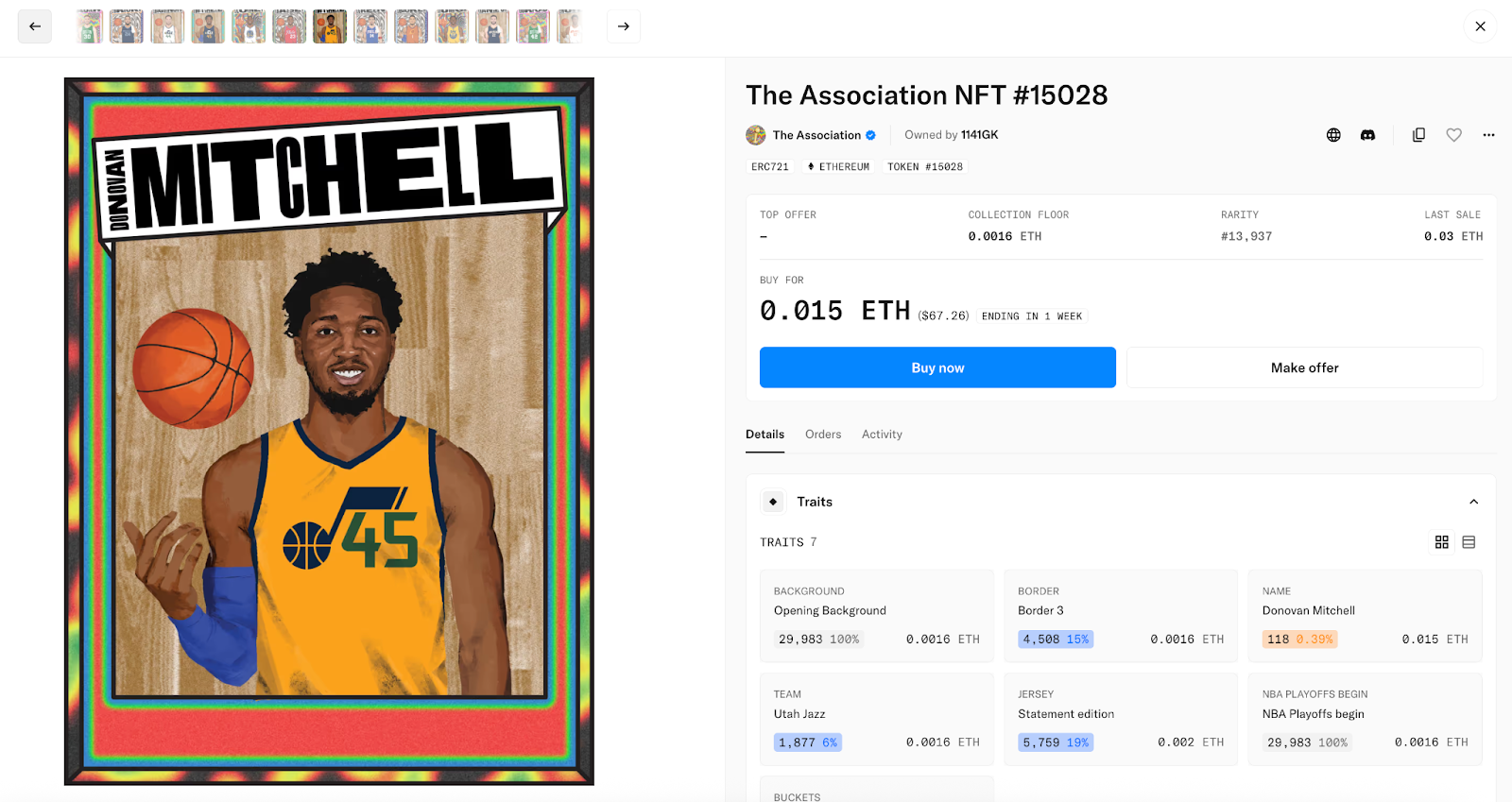
Make an offer
You can make an offer to buy an NFT using OpenSea, even if it’s not listed for sale. OpenSea will format your offer, and you’ll confirm those instructions by signing them in your wallet, which then submits them as a blockchain transaction. If the seller has an OpenSea account, they will receive notice of your offer and can sign parallel transaction instructions in their wallet. The transaction is then validated and recorded on the blockchain. You can also make an offer on a listed item through the same process, if you want to offer less than the listed price.
Recap: A step-by-step guide to purchasing your first NFT
Let’s walk through how to buy an NFT.
1. As we discussed above, there are multiple ways to buy an NFT. For this example, we’ll buy an NFT that’s listed for sale by clicking the “Buy now” button.
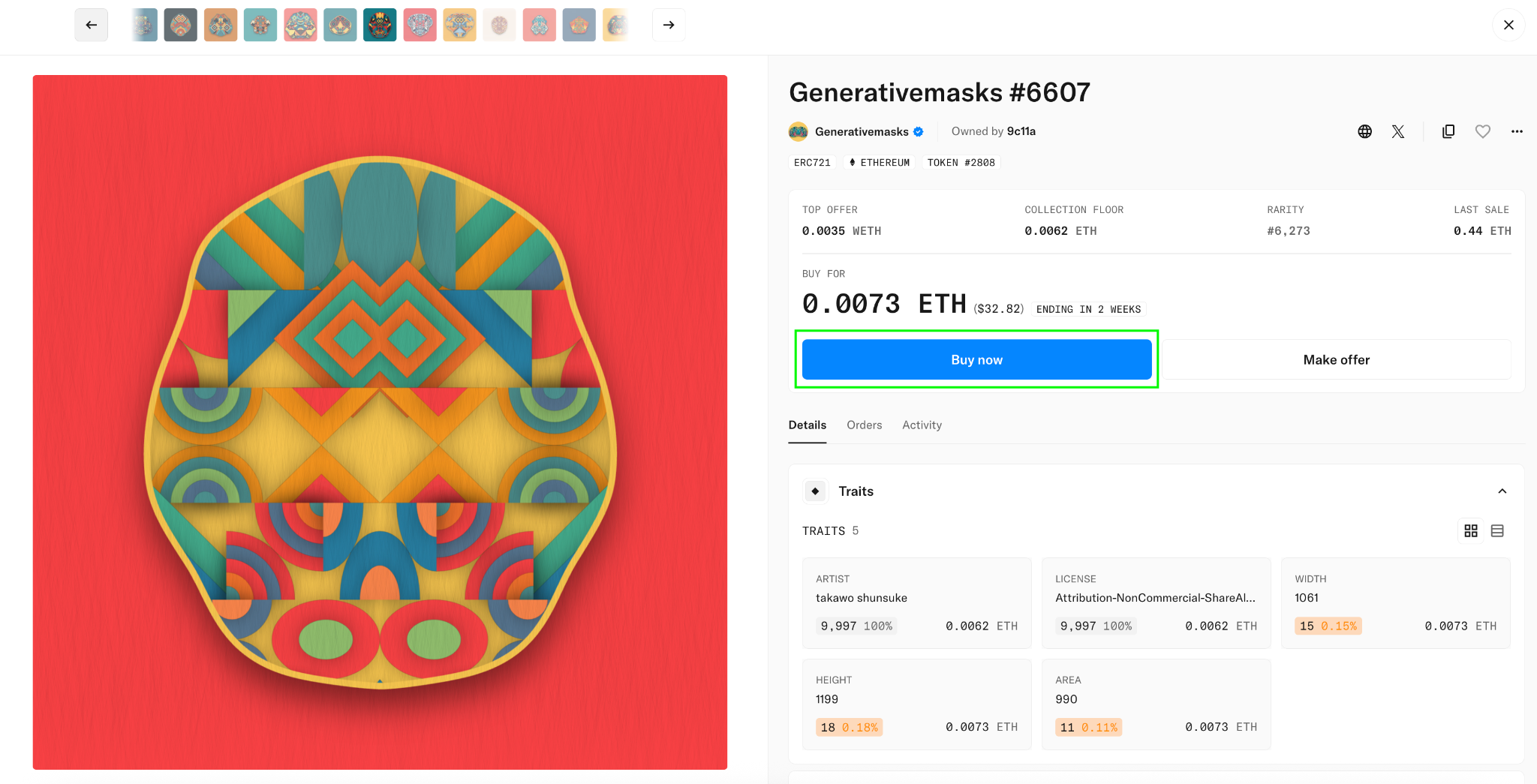
2. Connect your crypto wallet
The transaction will be submitted through your crypto wallet. If you haven’t already connected a wallet, you’ll be prompted to do so during this step.
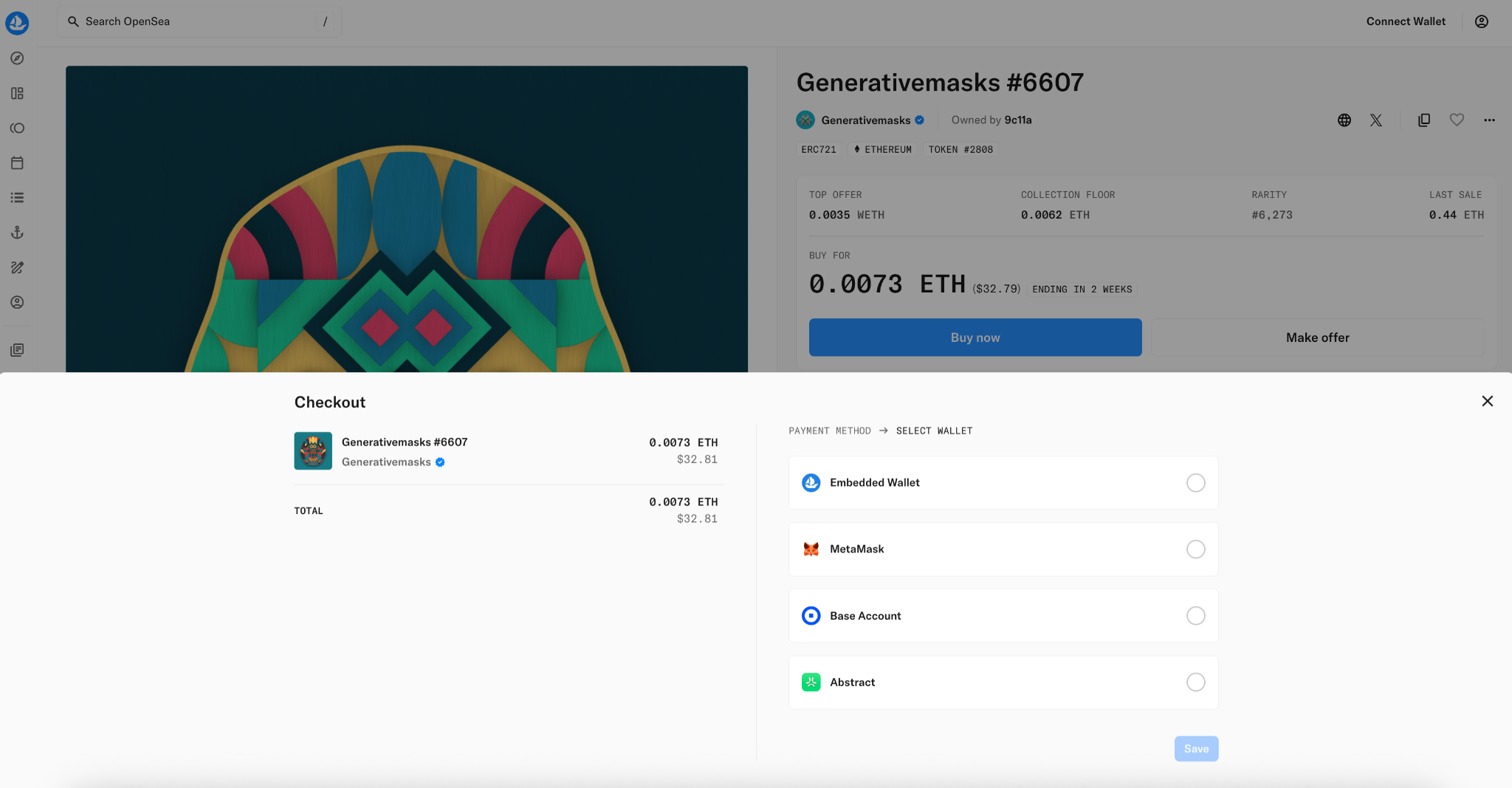
3. Choose your payment method
Next, you’ll decide whether to pay with crypto or with a card. For this example, we’ll use a card, which is processed by MoonPay. If you want to buy using crypto, you’ll need to load your wallet with cryptocurrency. Whichever method you choose, the transaction will be validated and confirmed on the blockchain, based on the transaction you sign in your wallet.

4. Review fees
You may notice that your total is higher than the listed price for that NFT. This is due to network (“gas”) fees and, if you’re paying with a card, processing fees charged by MoonPay.
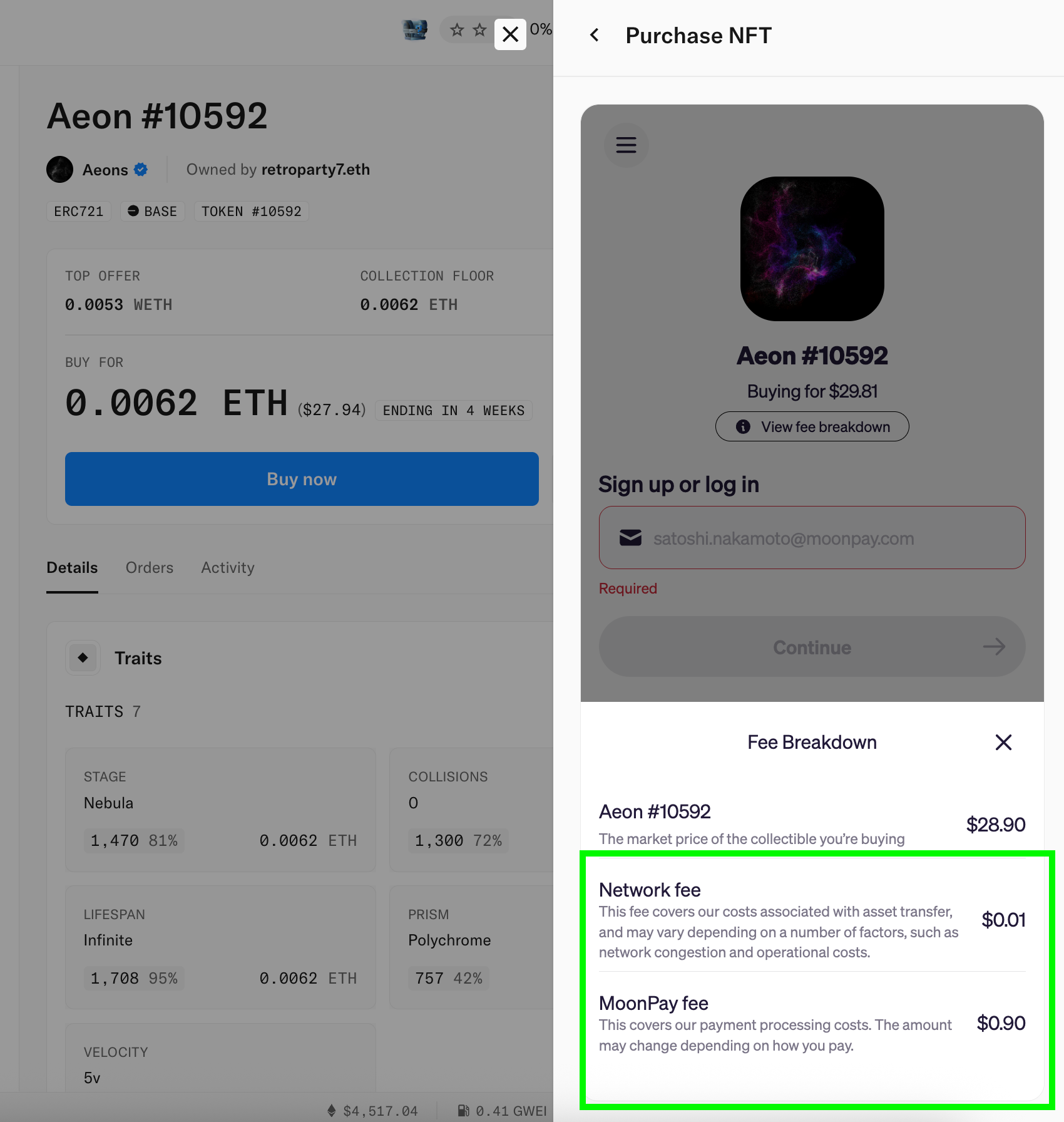
5. Enter your payment information
Follow the prompts and enter your payment information. If this is your first time purchasing with a card (through MoonPay), you may be asked to verify your identity.
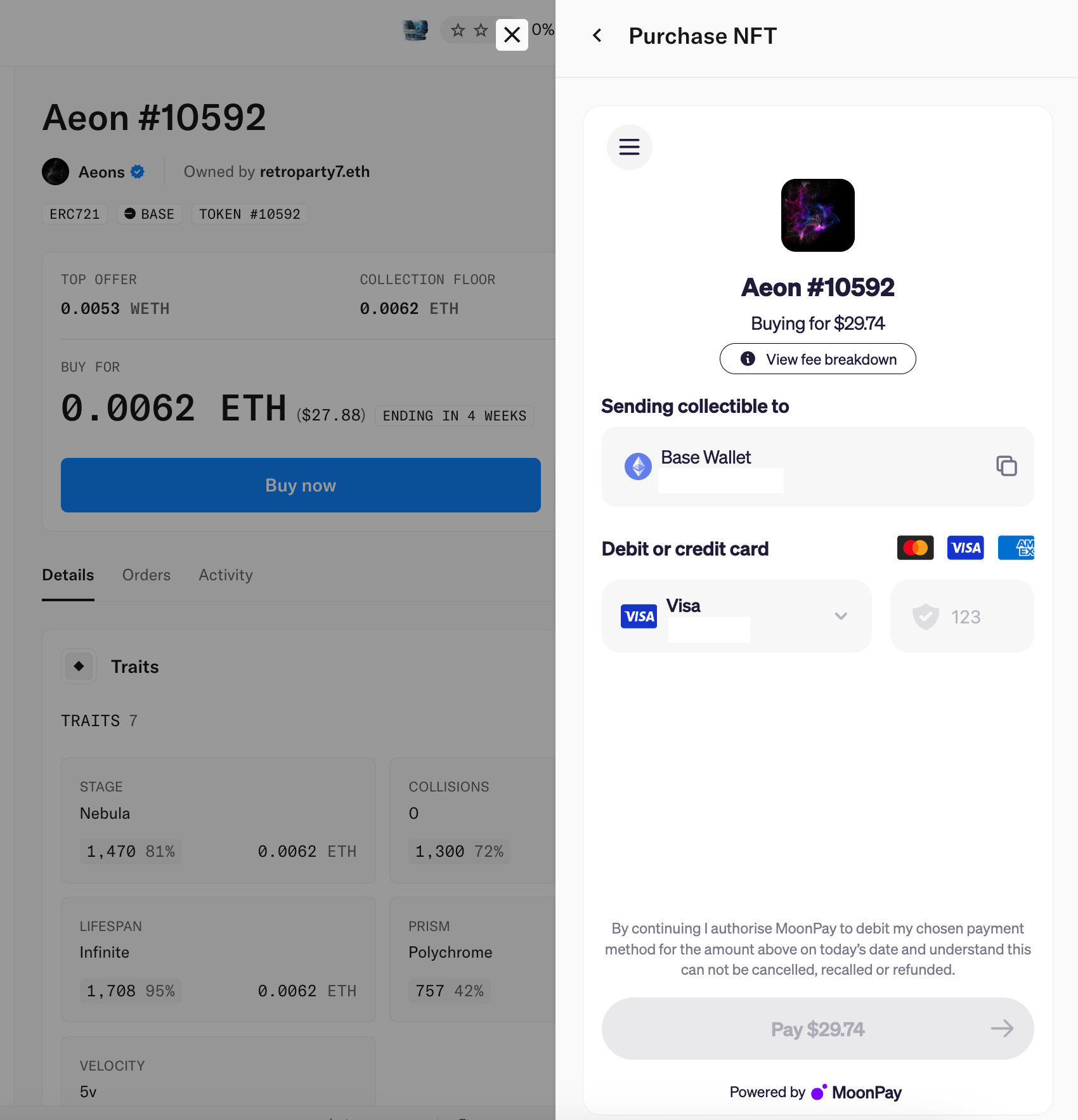
6. Submit your purchase through your wallet
Once you’ve entered all your necessary information and clicked “Pay,” OpenSea will pass your transaction instructions to your connected wallet. There, you will confirm and submit the transaction to the blockchain.
When OpenSea detects that the blockchain has confirmed your transaction, you will see that reflected in a pop-up screen like the one below. Congratulations on your NFT purchase!
7. Check out your newest NFT
After a few seconds, your brand new NFT should be visible in your collection. You’ll be able to see your new NFT in your OpenSea profile!
🧠 Q&A
Yes! You can list an NFT you own for sale, put it up for auction, or wait until you get an offer on it. Read more about selling NFTs here.
There are many reasons to buy an NFT that all depend on what the NFT is. You may like the art, want to support the creator, gain access to exclusive content or events, or find a community you identify with. Learn more about the different types of NFTs here.
Like any purchase, you want to make sure what you’re buying is authentic. Blue check marks mean a creator is verified by OpenSea or a verified user created the project (to learn more, we have a guide on NFT verification and more information about our commitments to removing copymints. You can also check if the collection is linked to an official Twitter account. Keep the golden rule in mind: if it seems too good to be true, it probably is!

Sign up for our newsletter
Join our newsletter to get web3 news, updates, interviews, and deep dives all in one place.


